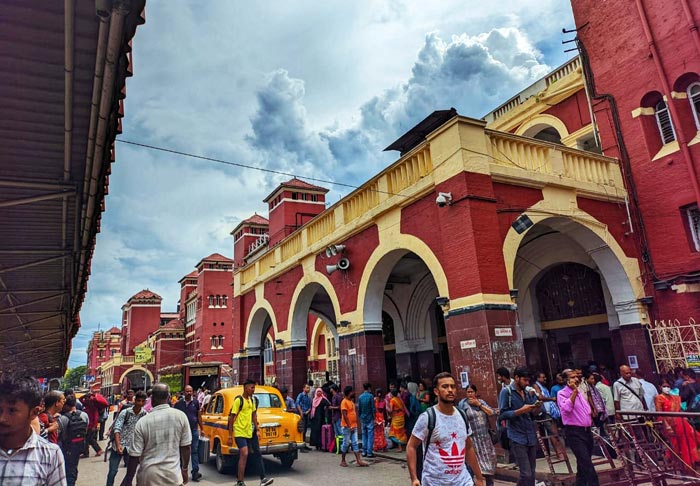The largest and oldest railway complex in India is at Howrah Station. The station is owned by the East Indian Railway (EIR), which was established in January 1847, and was formed by combining the East India Railway Company (EIR) and the Great Western Bengal Railway Company (GWBRC).The East India Company's Court of Directors and EIR signed a contract on August 17, 1849, to build the short experimental line from Calcutta to Burdwan that the Company had first planned in 1845.
On May 7, 1850, the East Indian Railway Company's managing director Macdonald Stephenson, the company's chief engineer George Turnbull, and the engineer Slater undertook an initial assessment of the route to the Raniganj coalfields from Howrah (across the River Hooghly from Calcutta) to Burdwan. For the fabled "zero mile" journey of the EI Railway's first train in August 1854, the Howrah Station, where it is now, served as the starting point.
"The train departed from Howrah to Hooghly, a distance of 24 miles, in full capacity. For the initial ride, 3000 applications were received, but only a select handful could be accepted. The train, which was built in Calcutta and had three first class, two second class, three "trucks" for third class passengers, and a brake van for the guard, departed Howrah at 8:30 in the morning and arrived in Hooghly after 91 minutes. The company transported 109,634 people in its first 16 weeks: 83,118 third class, 21,005 second class, and 5511 first class.
Look at Grace's Guide. ” From that point on, the EIR operated a regular service with stops in Bali, Serampore, and Chandernagar between Howrah and Hugli in the morning and the evening .First-class fares ranged from Rs. 3 to Rs. 7 for third-class travel.
George Turnbull, the East Indian Railway Company's Chief Engineer, submitted the initial set of plans for the first Howrah station on June 17, 1851. Despite the huge predicted development rate of the proposed train station, the government authorities were not very eager to purchase the amount of land that the Railway Company requested. Turnbull and his team of engineers worked extremely hard to complete and resubmit their station drawings with all of the necessary specifications in May 1852. Against a budget of Rs. 250,000, four tenders totaling between 190,000 and 274,526 INR were received in October.
According to what we now know, the former Howrah Station building was a massive columnar structure that was eventually torn down for the modern station building. It began as a simple red brick building with a corrugated iron sheet roof and one platform. In order to accommodate distinct train arrival and departure, another platform was erected in 1865. In 1895, a third platform was made available. These were not particularly long because occasionally up to five coaches would stretch over the platform. There were just four wheels on the coaches. 8 wheel coaches weren't available until 1903.
A new station building was suggested in 1901 as a result of a significant rise in traffic. Halsey Ricardo, a British architect, created the new station. To replace the older Howrah station, which has been in operation since 1854 and was opened in 1906, construction on a new, larger Howrah Terminus station with six platforms and space for four more begins in 1905.
"Calcutta continued to develop as a significant railway junction. The East India Railway connected Howrah with the northern outskirts of Delhi. The Great Indian Peninsula Railway carried on from Nagpur, where the Bengal Nagpur Railway stopped, to Bombay in Central India. The East Bengal Railway's line connected Sealdah, which was outside of Calcutta, with the Assam and Northern Bengal tea estates. The route constructed by Delhi's Sultan Sher Shah Suri in the sixteenth century was replaced by the Grand Trunk Road, which connected Howrah with Peshawar in the Hindukush Mountains. All highways now led to Calcutta, just as they had in Rome's previous era.
By-
Sriparna Mukherjee
Amity University, Kolkata


Comments
Post a Comment